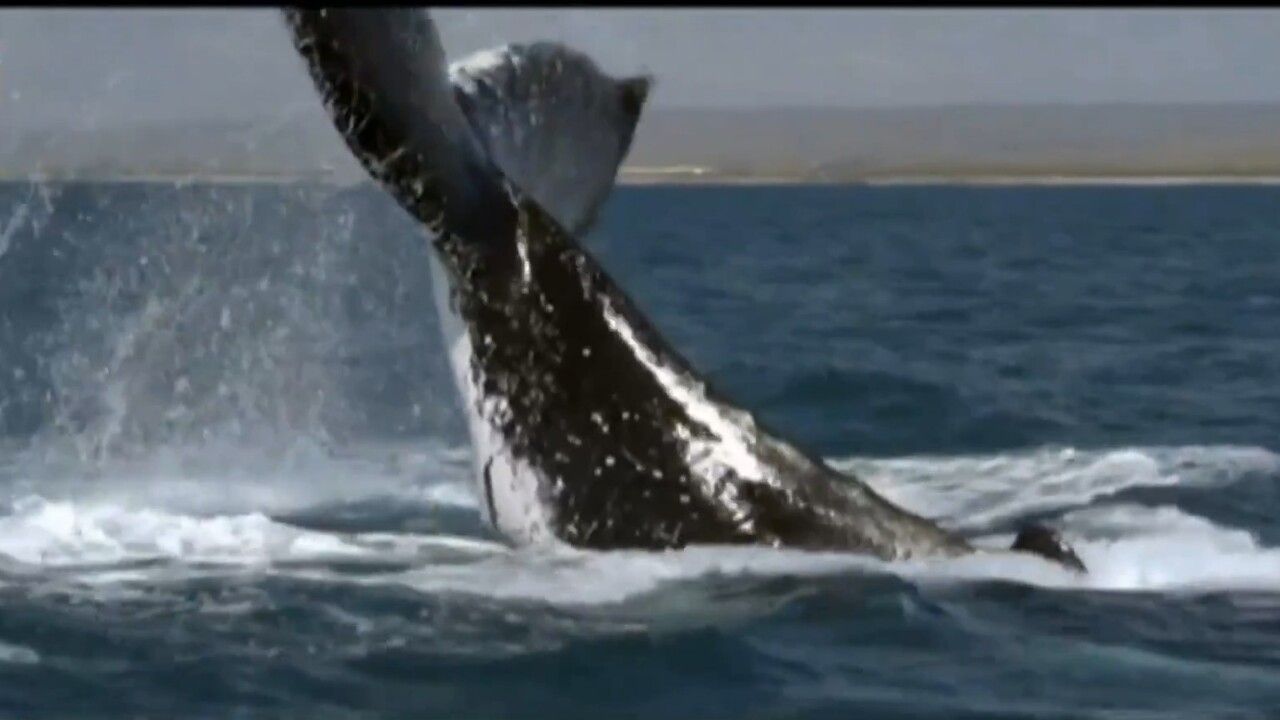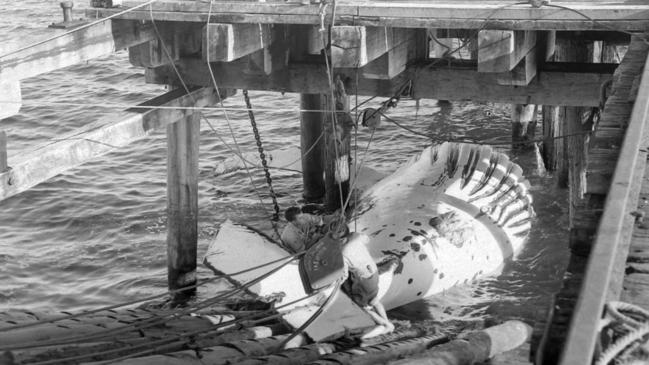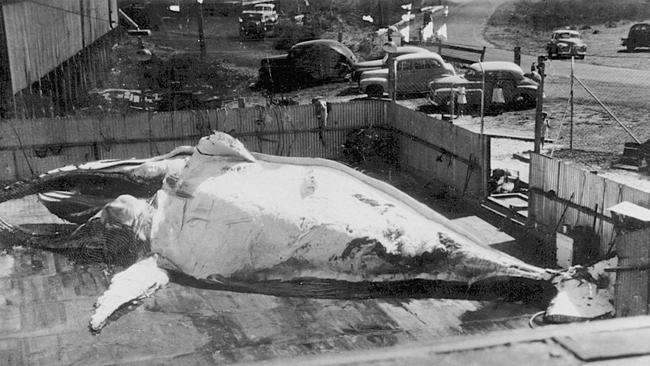Byron Bay whaling industry: A historical look from 1954-1962
It took just over 10 years for the “mechanised slaughter” whaling industry in Byron Bay to collapse, after over 1,146 whales were slaughtered for oil and meat export. Explore the fascinating history of whaling in Byron Bay.

Byron Shire
Don't miss out on the headlines from Byron Shire. Followed categories will be added to My News.
Whaling in Byron Bay started in 1954 – only 9 years after the end of WWII – when Australia was still a developing economy.
The Byron Bay whaling station operated from 1954 to 1962. During this time 1,146 whales were slaughtered, producing more than 10 thousand tons of oil.
The Byron Whaling Company – founded by A.W Anderson and Co. were owners of the local meatworks and were permitted to take 150 whales per season.

Whales migrating north during colder months from Antarctic were preferred as they had the largest reserves of blubber at that stage.
It was most profitable for the company to capture the whales early, while they were still full of fat.
Taking females and calves was prohibited at the time and the minimum size of the whales harpooned had to be 35 feet.

Once a whale was harpooned, it was strapped to a boat and the fins were cut off and jettisoned.
Air was then pumped into the whale’s belly to make it float.
It was taken to the jetty where it was dragged up a ramp onto truck and taken to the meatworks.
Then came the butchering: a flenser – someone paid to cut whale blubber for a living – would remove the fat, skin and meat.
The skin and blubber were boiled – separating valuable oils producing roughly 10 tonnes per whale.
The oils were used to produce margarine, explosives, lubricants, cosmetics and detergents.
Meat was cut into pieces; snap frozen and exported to England for pet food.
A large tank at the station stored the rendered down whale oil, or ‘tallow’ - the smell of the boiling whale blubber was said to be foul.

Liquid waste was pumped into sea through a “blood pipe” – resulting in sharks encircling the bay.
The humpback whale population had been decimated by the second half of the nineteenth century and the industry became unsustainable.
On a “good” day, whalers would harvest three or four whales.
But as seasons passed, workers spent more time at sea, needing to sail further away from Cape Byron to find whales.

The whales became smaller and leaner each year, almost halving the oil and meat harvest.
This was unsustainable economically and ecologically and the Byron Whaling Company ceased operations in October 1962 after harvesting 1,146 whales.
Mass-killing had thinned out the whale population to the point where they were unable to be hunted.
In 1962, it is predicted less than 5000 humpback whales remained in the southern oceans.
In 1966 the whaling industry collapsed and by 1978, culture shifted and most whaling nations, including Australia, signed international treaties and gave up the hunt.
Japan and iceland remain the only countries where whaling is legal.

When whaling ceased in Byron Bay, a total of 1,146 Humpbacks and two Sei Whales had been slaughtered in just eight years.
The humpback population has only recently been re-considered a threatened species.
Cape Byron, with its stunning cliffs and scenic views is one of the prime land-based whale watching locations in the world.

The whaling industry has been described as an era of “mechanised slaughter”, however it provided the region and many workers with a good income.
The dark history behind the whaling industry is a reminder Byron hasn't always been the idyllic town it is today.




